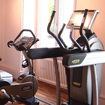Healthy Life
Pre-Intermediate level
Description
Materials
Main Aims
-
To provide reading practice using a text about healthy life style in the context of People in Okanawa people
Subsidiary Aims
-
To provide clarifying health words in the context of healthy life style
-
To provide clarifying health words in the context of healthy life style
Procedure (32-45 minutes)
Teacher draws a person and closes his/her face with the paper with a question mark on it. Then she gives them a small paragraph to make guesses in pairs about him or her by writing the questions on the board. 1. A man or a woman? 2. How old is he / she? 3. Where does she / he live? 4. Does she / he look good you think? 5. Is your life similar to her / his life? ( make a link to their lives) Then teacher gives the first paragraph of the text which includes all the answers of the questions above and introduces the character. And asks the critical question Are the people in the Island like Chiako the character? They find the answer in the same text and they say yes. By doing this activity, I will be able to set my context. ( Lifestyle of Okinawa People )
As a top-down reading process, students read the whole text quickly to answer these two questions below. 1. What is the text about? 2. Is it an article / a fairy tale / a story? They read the text individually, then they discuss the answers in pairs. Teacher cheks the answers.
After skimming activity, teacher gives one question for each paragraph to match. Students first do the activity individually then discuss in groups of three. Teacher gives numbers to the students 1, 2, 3 and the same numbers work together to check the answers. Questions: 1. What is the significance of the large stone in Okinawa? 2. How do Okinawa's people look thin? 3. What kind of activities do they do? 4. Do they rush? Why, Why not? 4. Are they friendly and helpful?If yes, give a reason. 5. What is the secret of living long? These questions force them to read in detail and show a proof. So, this section is more challenging than the previous ones written above. After the activity, students discuss the answers and teacher gives the answers.
In the same groups students answer the questions in full answers. Then they discuss the answers and check. Teacher asks them if they know any places in Turkey like Okanawa?(Post-Reading activity) They speak about it.
Teacher writes the vocabulary on the board. - ancestor -consist of -stress-resistant - non-existent - strong network - stress-free For a while, she lets them work on the text. (meaning, parts of speech) Then she gives the definitions on the handout to check.
Finally, students try to illustrate the key words and stick them on the walls for the next lesson which is supposed to start with the revison of vocabulary.

